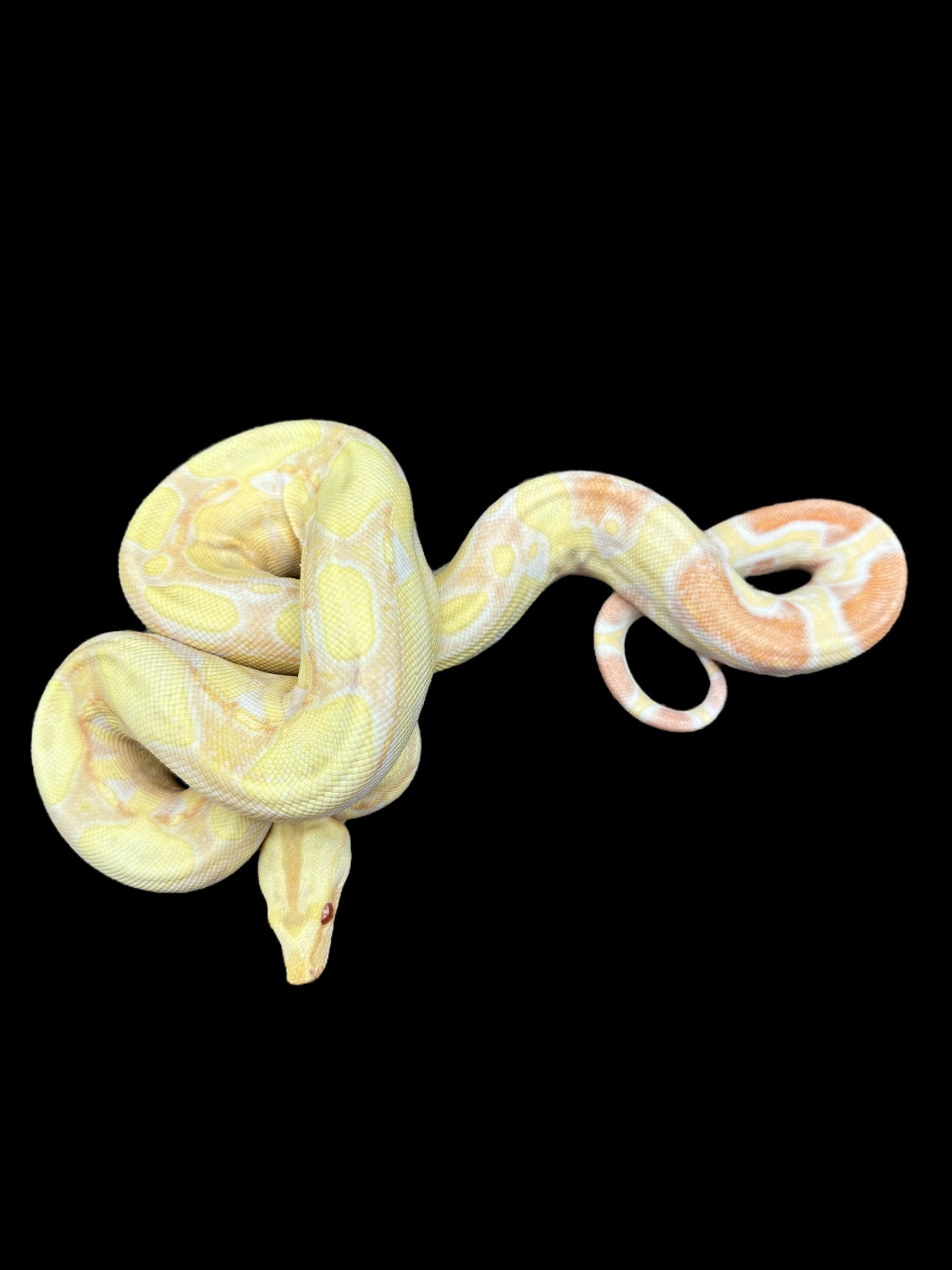Photo Disclaimer
Description
Boa Constrictor Imperator (BCI)
Boa constrictor imperator
Morph: Albino
Species Overview
-
Size: BCI typically reach 6–8 feet (1.8–2.4 m) in length, with females generally larger than males. Adults can weigh between 15–30 pounds, depending on genetics and husbandry.
-
Appearance: This morph displays the Albino trait, which removes melanin and results in striking yellows, oranges, and whites with bright red or pink eyes. Saddles and markings are often more vivid compared to wild-type BCI. The base traits of the species remain: heavy-bodied boa with saddle-like dorsal markings and a distinctive head shape.
-
Distribution: The natural Boa constrictor imperator is native to Central and South America, ranging from Mexico through Colombia.
-
Habitat: In the wild, they occupy tropical lowlands and semi-arid environments, often near rivers, forest edges, and savannahs.
-
Behaviour: Primarily nocturnal ambush predators, boas feed on small mammals, birds, and reptiles. They are adept climbers and swimmers but spend much of their adult lives terrestrially.
Captive Care
-
Enclosure: A naturalistic enclosure is strongly recommended, with at least 6′ × 2′ × 2′ for adults. Provide branches, hides, and natural décor such as cork bark and plants. Bioactive or semi-bioactive setups with leaf litter and live plants work well for enrichment and humidity stability.
-
Temperature & Humidity: Maintain a gradient of 80–85°F (27–29°C), with a basking spot of 88–92°F (31–33°C). Nighttime drops to 75–78°F (24–26°C) are acceptable. Humidity should remain between 55–70%, with access to a large water dish for soaking.
-
Diet: Juveniles feed every 7–10 days on appropriately sized rodents, while adults thrive on larger prey every 14–21 days.
-
Behaviour in Captivity: Generally hardy and more tolerant of handling than many arboreal species. With consistent, calm husbandry, most individuals become manageable display or handling animals.
-
Special Considerations: While selective breeding has produced a wide variety of morphs, their core care requirements remain identical to standard Boa constrictor imperator.
Genetics Note
-
Albino (recessive): The Albino gene removes melanin, creating vivid yellows, oranges, and whites with pink-to-red eyes. Since this is a recessive trait, an individual must inherit the Albino gene from both parents to visually express it. Albino BCIs are highly popular in the pet trade and are often used in breeding projects to create additional designer morphs (e.g., Snow when combined with Anery).

